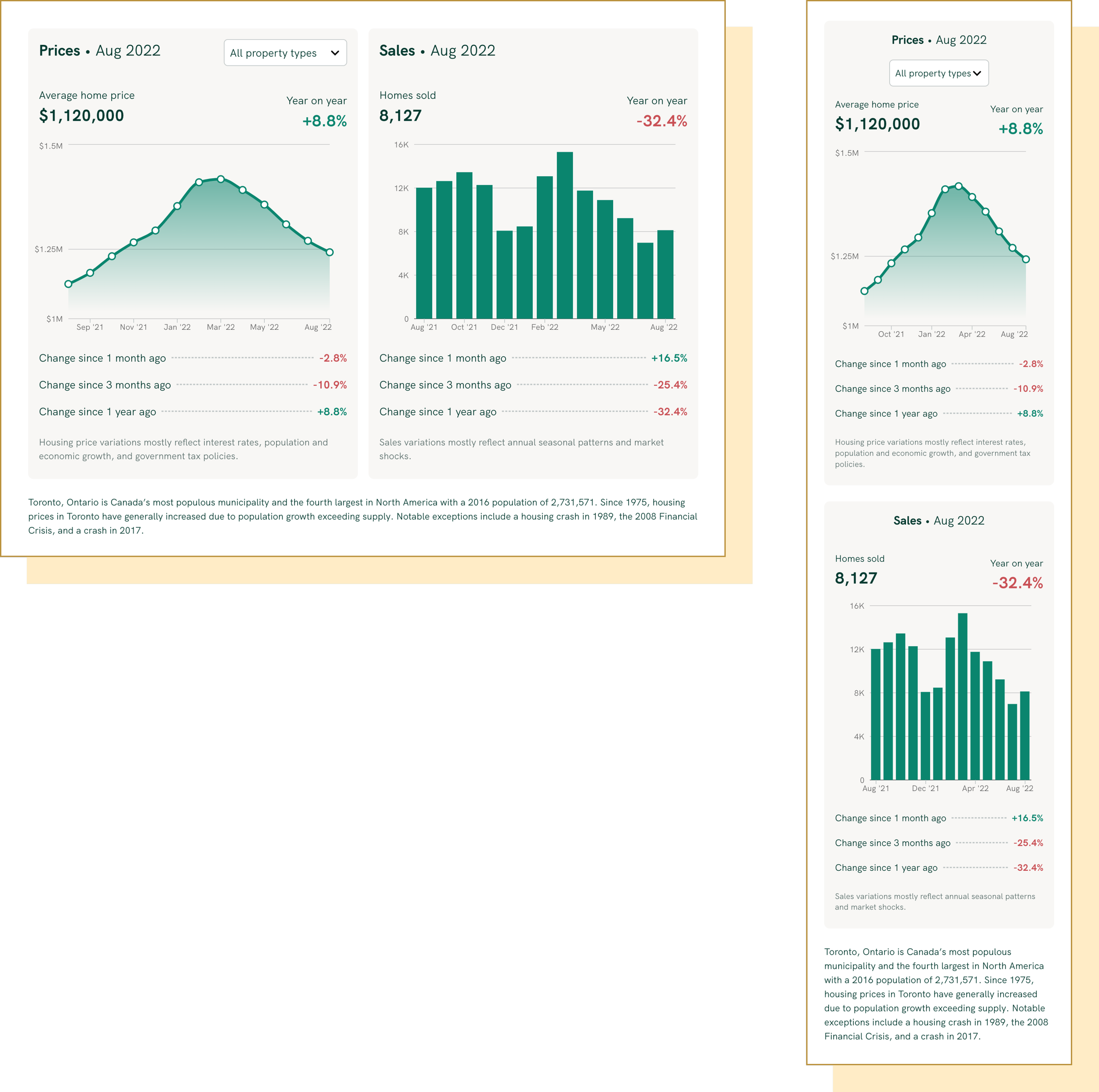Instant Estimate
A fact-based calculation report unique to your home
The Properly Instant Estimate (PIE) is an automated home valuation report, calculated using Properly artificial intelligence.
The free report includes supporting data such as a market update, actual selling prices of nearby sold homes (i.e. comparables), and similar homes for sale now.
Properly’s home value estimator artificial intelligence considers over one million actual sold homes, and is on average over 93% accurate (R-squared = 0.93, MAPE = 6.6%). It is Canada’s most accurate free home value calculator.
The core user problem that the report solves is “What is my home worth?”. Customers need to understand their current home’s value in order to determine their buying budget for their next home.
You can find out your own home’s value here: https://www.properly.ca/instant-estimate/
The moment of delight
To answer the question of “What’s my home worth”, we displayed and emphasized the instant estimate number as the primary heading on the page.
Although users wanted to anchor to “one number” for their home’s worth, in reality, price estimates are not a perfect science because nobody knows the true price of a home until it’s sold. The buyer ultimately decides what the home is worth based on how much they’re willing to pay. With this as a constraint, the instant estimate provides customers a middle, upper, and lower range in order to contextualize the home value.
Once a user gets their estimate estimate, we have two business goals:
1) Retention - Incentivize users to track their instant over time. This was achieved via the Track button.
2) Conversion - Incentivize users to connect with our sales team to get a personalized home valuation, that is human-powered and is more accurate than the automated valuation. This eventually led to an agent introduction and an opportunity to win the customer.
Comparable sold homes
One of the best indicators of your home’s value is the sale price of similar homes in your neighbourhood that have sold recently. These comparable homes are often referred to as “comps”. Whether it’s a home appraisal, a comparative market analysis done by an agent, or the Properly instant estimate, most real estate experts rely on comps to estimate your home value.
Customers wanted to review comparables and understand the following:
Photos: Two homes can have the same square footage, the same number of beds and baths, but look completely different inside. Photos enabled customers to understand if their home was newer, had better finishes and layout, and whether it matched architectural style.
Recency: When the home sold—the more recent, the better.
Sale price: The price of home that sold on your street directly affects your own home’s valuation.
Feature similarity: Relevant comps are most similar to your home in terms of features like type of home (two-story vs. ranch), year built, number of bedrooms, bathrooms, and square footage.
Distance: The machine learning model prioritized comps that were close to the subject property.
After trialing different concepts and user testing, we opted to use a card layout to show comparable sold homes. This scaled well to a mobile view, and it allowed customers to quickly access information about a comp. Customers can also access a more detailed comparison by clicking “Show more details”.
Market trends
A home’s value is impacted by the market trends in the home’s neighbourhood and city. Two primary figures Properly uses to infer home value is average home price and number of sales transactions. In 2022, average home values began to decline significantly, and customers consequently saw their own home estimate decline.
We designed these charts to give customers an informative and simple understanding of how the market is trending over time.
Interaction challenges
Since real estate boards required a verified account to display sold data, we needed to give users a preview of the data they’d see after making an account.
We used the $XXX pattern to ghost real numbers, and clearly explained to users why we need their email to see the estimate.
Another successful visual ghosting pattern was the blurring of photos.
Once a user was tracking their instant estimate, they would receive this email on a monthly basis to get them back into the product and stay retained.





